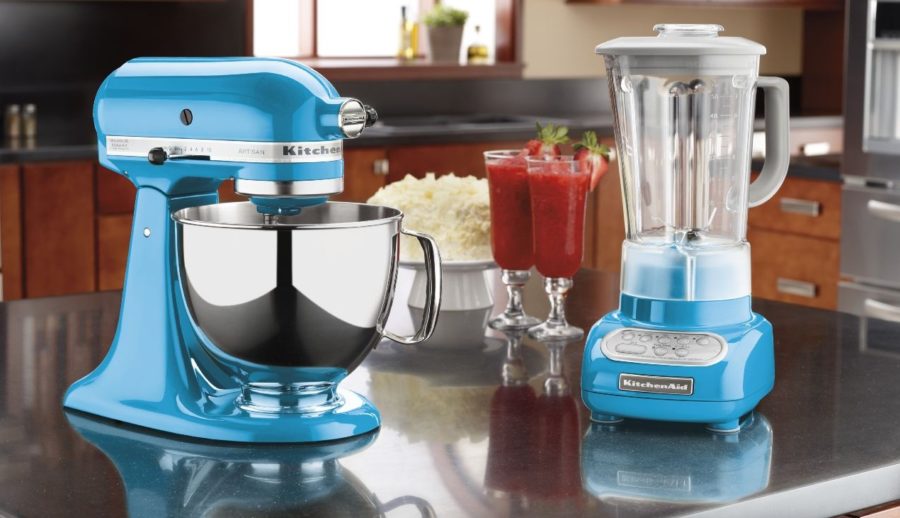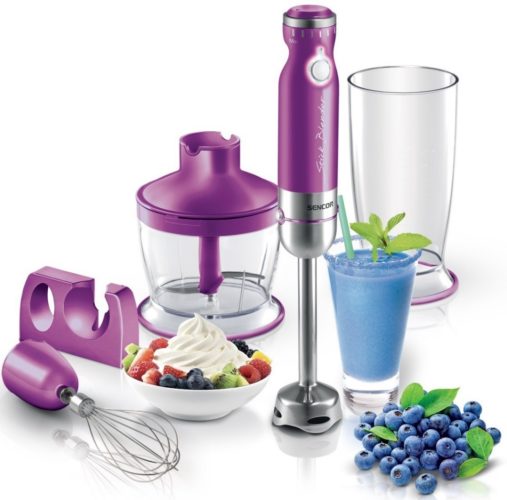More recently, many housewives completely dispensed with a manual whisk and manual meat grinder. And with the advent of technical innovations, some women are in real confusion - a blender or mixer, which is better to purchase in order to solve several kitchen problems at once.
The modern market for small household appliances is oversaturated with all kinds of multifunctional devices that greatly facilitate the life of cooking masters. Individual devices may have similar or even identical functionality. Sometimes it’s quite difficult to find significant differences. But this is a very fundamental question for those who are against filling the kitchen space with several appliances with the same functions at once.

It seems to some that the difference between a blender and a mixer is not that big, so one of the devices can be dispensed with. But in fact, this is far from the case. These devices are significantly different and have different purposes.
What you need to know about blenders
A blender is a powerful enough device that can process fruit and berry components, nuts, meat, fish, crush ice, mash, beat eggs or cream in a matter of minutes. Its main purpose is to grind and mix. As a rule, they are comfortable, compact and fit well in any kitchen.
There are 2 main types of blenders:
- Submersible - a kitchen appliance that successfully copes with the tasks of grinding products. It consists of an elongated handle, in which a motor and control buttons are integrated. And also implies the presence of a container in which the ingredients will be mixed. In addition, it can be equipped with a variety of bowls and nozzles, including mixer whisks.
- Stationary is also a kitchen device grinding products, consisting of a body, bowl and lid. All this is located on a stable foundation. The device can be controlled mechanically or electronically. This device is capable of not only crushing all kinds of products, but also it can break ice, puree, and whip creamy consistency. Such a device is something between a mixer and a food processor.
Both types of grinding devices have slightly different functionality. Stationary has a narrow specialization due to a single nozzle. With its help, you can successfully prepare cocktails and mashed any product. Some models are equipped with a nozzle for crushing ice. Submersible models are more functional, thanks to a set of various nozzles.
To chopping devices had a longer service life, it is better to give preference to models with metal cutting elements. If the device is equipped with plastic parts, then during operation, against the background of heat from a heated engine, they can melt.
Advantages of blenders:
- the ability to perform many functions;
- quick crushing of various ingredients, including nuts and ice;
- relatively compact sizes.
Disadvantages of blenders:
- creates a lot of noise;
- in submersible models you need to constantly hold the button;
- during prolonged use, it may overheat and fail;
- additional functions (whisk) poorly cope with the tasks;
- a heated motor affects the taste and beneficial components of fruits and vegetables;
- difficult to clean (do not allow water to fall on the part with the engine).
Well, of course, before deciding what is best to buy - a blender or mixer, you still need to have a general idea of the mixers.
What you need to know about mixers
A mixer is a device that is actively used in kitchens for mixing and whipping soft or prepared foods. In terms of speed, it is significantly inferior to the blender, and also a nozzle with sharp knives is not included in its package.The main working element of the device is a pair of corollas made of durable metal.
On sale are widely found 2 main types of whipping devices:
- Manual - implies the constant holding of the unit in the hands of the user. He successfully kneads a thin dough and combines various components. Such a device, as a rule, is small, easy to disassemble and compactly stored. He does pretty well with simple culinary tasks. But the device will not be able to knead a relatively thick dough.
- Stationary - a reliable, respectable, kitchen device. Its package includes the actual mixer, a bowl in which the ingredients are mixed and a stand that provides stability during the work process. The stationary mixer requires a constant place and occupies part of the kitchen surface, but it functions independently.
Both types of whipping devices easily mix any liquid products. They work equally well with whole milk, dairy products, ghee, eggs. Such units can easily help prepare a cocktail with lush foam. Creams, sauces and mayonnaise are also within their power.
The mixer cannot work with solid ingredients. A homogeneous mass can be achieved only from liquid or pre-processed components. If, for example, in the process of preparing a cocktail, berries and pieces of fruit are sent to the beating bowl, then they will remain rather large particles in the finished drink.

Advantages of mixers:
- during continuous operation the engine does not overheat;
- whipping of liquid products occurs quickly and efficiently;
- easy to clean and care (all parts can be safely washed in the dishwasher).
Disadvantages of mixers:
- highly specialized device;
- the stationary model is rather bulky;
- makes quite a lot of noise.
A mixer or blender can be a real helper in the kitchen. Especially if preference is given to a sufficiently powerful model. Thinking about what to choose, the hostess, first of all, needs to understand her culinary preferences and what processes will be more often demanded during cooking.
Distinctive features of grinding and whipping devices
Differences of the blender from the mixer can be identified, focusing on the purpose of use.
| Blender | Mixer |
| Equipped with a blade knife or replaceable nozzle | Equipped with a pair of whisks and a kneading hook |
| Grinds and crushes even hard products well | Beats eggs, dough, cream, smoothies well |
| Creates gruel, mousse, mashed potatoes | Mixes until smooth |
| Perfectly mashes any products for main courses | Suitable for pastry purposes. |
| Due to additional nozzles it can be a multifunctional device | A highly specialized whipping device |
| Knife rotation speed up to 20,000 rpm | Rotational speed from 10,000 to 15,000 rpm |
| Overheating during continuous operation | Long work is not scary for him |
| Does not cope with the dough | Not very thick dough kneads exceptionally well |
| It turns out practical in cooking complex dishes | Indispensable for baking |
And if the blender in the presence of a whisk attachment, though not perfect, but still can knead pancake dough, scrambled eggs or achieve a creamy consistency, then the mixer will not cope with any task that the blender's knives can solve. If you evaluate in general, then the blender certainly wins in terms of functionality. However, if there is a need for whipping a light weightless mass, then you can not do without a mixer.
Experienced consumers recommend:
- If desserts and all kinds of confectionery masterpieces are not alien to the hostess, and she primarily does this in the kitchen, then a mixer must be at hand. He will solve several problems at once - kneading dough, whipping cream.
- If there are kids in the family or there is a love of culinary experiments, then it would be wise to purchase a blender device.
- And if cooking occupies a major place in the consumer’s life and he’s ready to cook various dishes for days, then you should buy a multi-blender with advanced functionality.
It is worth noting that the third option really justifies itself only if it is purchased for a lot of money from a trusted manufacturer. Cheap multi-blenders turn out to be very weak and doubtfully cope with culinary tasks. This is because the combined technique, equipped with all kinds of nozzles, actually loses the power and quality of each individual task.

Of course, in the conditions of serious confectionery shops, it is unlikely that anyone will begin to beat the dough using a corolla nozzle blender. Nevertheless, in amateur home kitchens, the mixer, as a separate device, gradually ceases to be in great demand. This is due to the fact that blenders have well established themselves as multifunctional and cost-saving devices.
Although the devices discussed in certain situations can partially replace each other, they actually differ in their functionality and are not of the same type. So, having figured out how the blender differs from the mixer, and also having analyzed the purpose of the purchase, how much work and how often the appliance will perform, the consumer will not be mistaken with the choice of a reliable kitchen device.